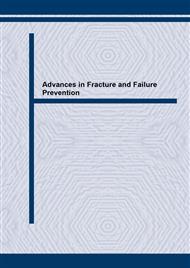p.123
p.129
p.135
p.141
p.147
p.153
p.159
p.165
p.171
Evaluation Strength and Fracture Toughness of Reduced Activation Ferritic Steel (JLF-1) for Fusion Reactor
Abstract:
Reduced activation ferritic (JLF-1) steel is one of the leading candidates for blanket/first-wall structures in D-T fusion reactors. In fusion applications, structural materials will suffer the effects of repeated temperature changes. Therefore, a database of tensile strength and fracture toughness are very important as the temperature is 400 ° C and it's TIG welded joint. In this paper, fracture toughness JIC and KIC) and tensile tests were carried out at room temperature (RT) and at elevated temperature (400 ° C). The tensile properties of the TIG welding joint of JLF-1 steel was also investigated. It was shown that the tensile strength and fracture toughness values of the JLF-1 steel are slightly decreased with as increase in temperature. The fracture toughness values of JLF-1 steel at room temperature and at 400°C show excellent JIC values of about 530 kJ/m2 and 340 kJ/m2, respectively.
Info:
Periodical:
Pages:
147-152
Citation:
Online since:
April 2004
Authors:
Price:
Сopyright:
© 2004 Trans Tech Publications Ltd. All Rights Reserved
Share:
Citation:


